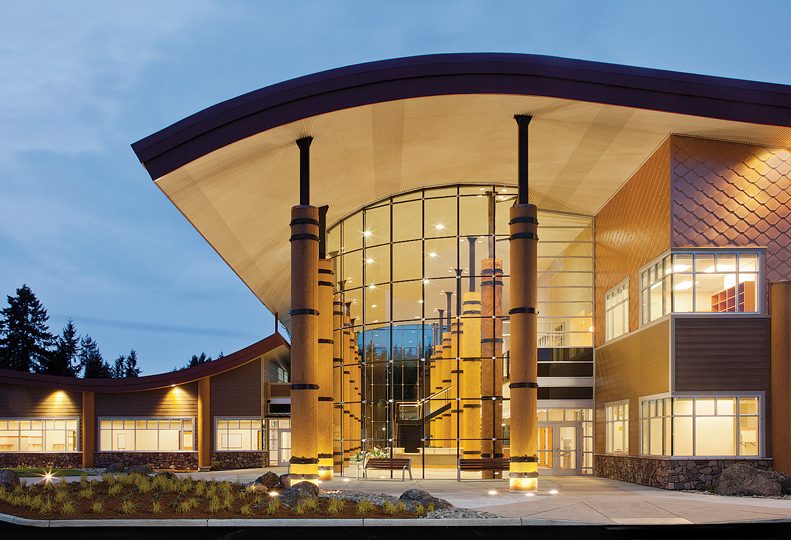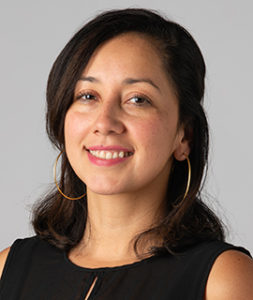
Home » New leadership emerges at Womer & Associates
New leadership emerges at Womer & Associates
Founder William Womer, longtime principal Robert Smith retire

November 4, 2021
Womer & Associates Inc., a full-service architecture and engineering company based in downtown Spokane, has changed leadership this year with three new principals and a new president.
The new principals are Nima Michael Motahari, senior architectural project manager and public relations manager; Mark Morrison, a civil engineer and head of the civil department; and Jacolby Simpson, civil designer and project manager.
They bought out the shares of company founder William Womer and longtime principal Robert Smith, who have retired recently, Motahari says.
Rick Mathews, Womer’s remaining longtime principal, is now its new president. Matthews also oversees the architectural and engineering departments.
Located on the sixth floor of Old City Hall, at 221 N. Wall, Womer is a multi-discipline Native American design company that offers architectural, mechanical, electrical, structural, and civil design services. It employs a team of 22 people and has an annual revenue of $2.1 million, says Matthews.
Motahari says Womer brings in most of its revenue from outside of the Spokane area, including from some projects west of the Cascades and some as far from here as Oklahoma and New Mexico.
The heart of the company’s focus, however, is serving Native American tribes in the Pacific Northwest, including those close to home. Its clients include the Spokane Tribe of Indians and the Confederated Tribes of the Colville Reservation, in Eastern Washington, and the Nisqually Indian Tribe, on the West Side.
Mathews, who has been with the company since 2000, says Womer & Associates was founded in 1992 by William Womer, a planner for the Colville Tribe who saw a need for a design company to serve tribal clients.
Motahari, who has been with the company since its early days, adds, “Willy saw a need to bring someone that they trusted.”
Womer’s architectural projects are different from tribe to tribe, and the company strives to create designs that respectfully incorporate a client’s culture, heritage, and traditions within a subtle metaphorical framework, says Motahari.
Mathews explains that part of building trust with clients is actively listening and engaging with them to understand what they are trying to do and how they work together.
“One building that pops to mind is the Nisqually Administration building,” says Mathews.
The building, located in Olympia, was inspired by the Boldt Decision—a 1975 ruling in U.S. District Court for Western Washington that recognized fishing rights promised in treaties and affirmed tribal sovereignty.
The ruling barred the state’s attempts to regulate tribal fishing.
“The Nisqually was a true leader to fight that war. And if you look at our design, it represents the salmon, the Nisqually net, even some of the siding looks like scales of salmon going upriver to spawn,” Mathews says.
The Stillaguamish Administration building in Arlington, Washington, has polished concrete floors designed with a weaving pattern that suggests the life and flow of the river. It measures 26,000 square feet and seen from above resembles the shape of a canoe.
“It’s very subtle. You may see something but not know it, and that’s the point. It’s metaphorical,” says Mathews.
Requests from clients can be very specific, such as doors that face east and west. A subdivision in Yakima Nation requested that all the houses face the same direction, says Morrison, adding: “More so with Native projects than any other projects I’ve worked with, there’s more of a connection to a spirituality.”
Simpson, who grew up on a reservation, describes his experience of culturally insensitive architecture and engineering firms coming in and just “shoving designs” that left the community feeling like they had no say on what was going on with the building.
Motahari adds that multiple Womer clients have described shelving plans created by culturally unaware architecture and engineering firms, because the designs were like “any other building in the area,” didn’t represent the clients, and often were beyond their budgets.
“The problem with all A&E professionals through the years is always that they feel they know more than the client,” Motahari claims. “That never translates well and certainly not when you go to Native Country. We want to design buildings that are going to be built, not shelved.”
Mathews says another key element that sets Womer apart and facilitates a trust with clients is that as a full-service company, it doesn’t collaborate with subcontractors.
“If an issue comes up, we will stick with (the client) until it’s resolved,” says Mathews.
Simpson adds, “And that’s even five years down the road after all the guarantees are up. They can still call us, and we will figure out a solution for them. That’s one reason we’ve earned their trust.”
Simpson is a member of the Colville tribe and is Womer’s primary liaison on all projects concerning the Colville reservation, which is headquartered in Nespelem, Washington. Mathews is a member of the Spokane Tribe and acts as the company’s liaison to the tribe. Motahari acts as a liaison to the Nisqually tribe, which is headquartered in Olympia, and other tribes on the West Side. Morrison has relationships with all the tribes in regard to civil engineering matters.
In addition, Womer is a state and federally certified minority company employing people from diverse ethnic backgrounds and from across the globe, including from China, Afghanistan, Iran, and the Philippines, Simpson says.
Womer currently is working on up to 10 architectural projects, five engineering projects, and several smaller tasks, says Mathews. Some of the larger projects include The Native Project Youth Center, in north Spokane; Mistequa Hotel, in Chewelah, Washington; and Squaxin Island Tribe Head Start expansion, in Shelton, Washington.
Morrison says, because the company performs several disciplines, when one department slows down, others pick up. For example, the civil department has stayed busy during the COVID-19 pandemic.
Mathews says he and the new principals have been evaluating how Womer will stay relevant.
Although much of the company’s experience is in Indian Country, the new leadership strives to maintain the company’s relevance by actively listening while remaining aware of the uniqueness of every client, Mathews asserts.
“That’s part of our vision and how we continue to keep growing and developing the company,” he says.
Like this story?
You’ll love the rest. Subscribe today, and you’ll receive a year’s subscription to the Journal of Business, unlimited access to this website, daily business news emails, and weekly industry-specific
e-newsletters. Click here for 50% off your first year.
Latest News Up Close Real Estate & Construction
Related Articles
Related Products


![Brad head shot[1] web](https://www.spokanejournal.com/ext/resources/2025/03/10/thumb/Brad-Head-Shot[1]_web.jpg?1741642753)


